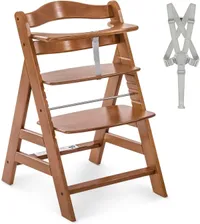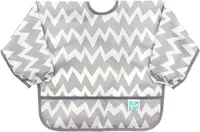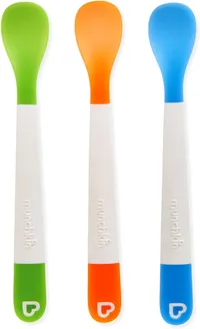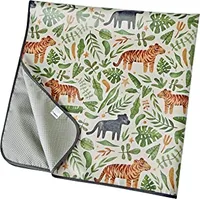How to start weaning - according to the experts
An ultimate guide on how to get going
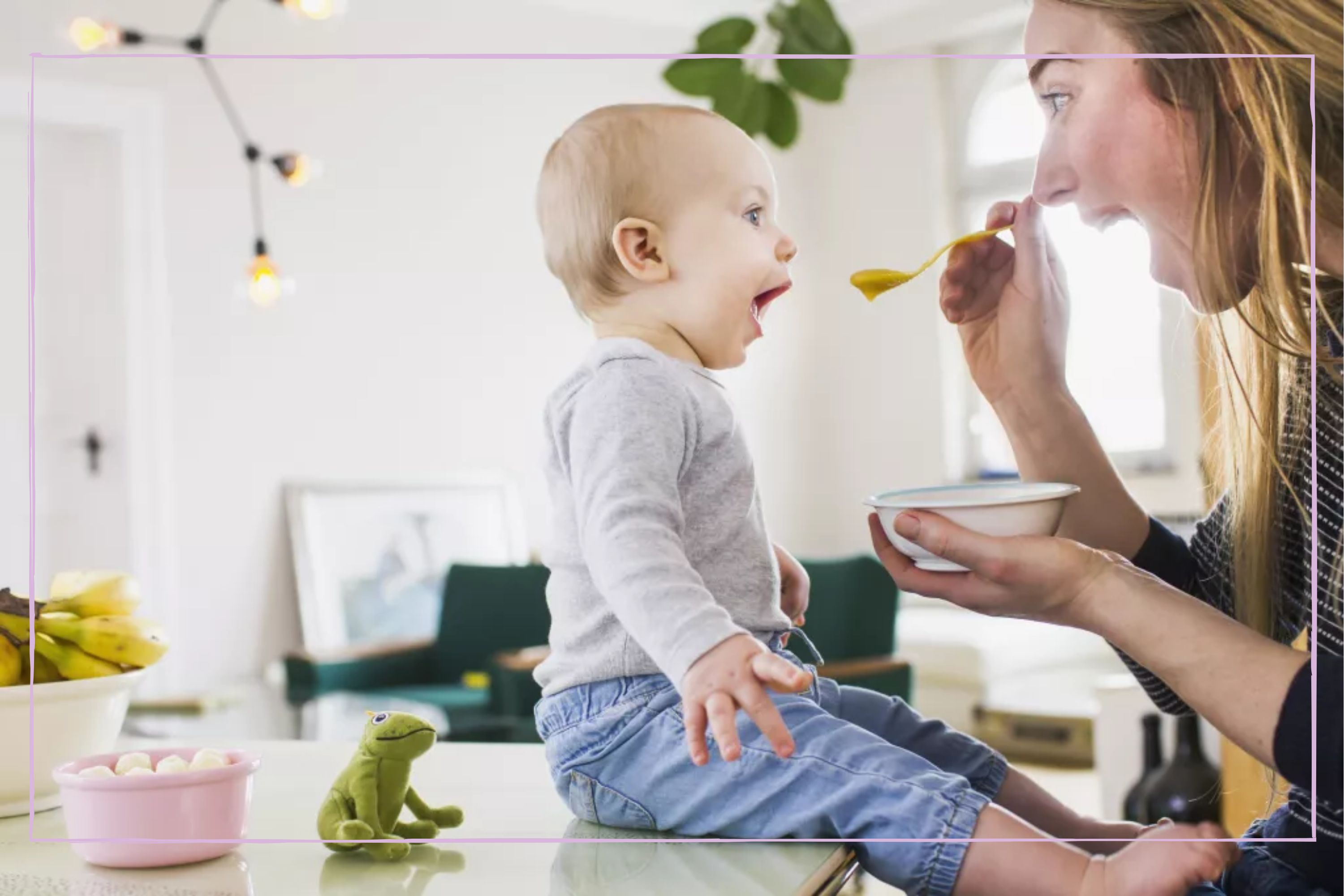
Baby-led weaning can be fun and exciting, but also overwhelming. We've cut the jargon and simplified the need-to-know information to help you see success.
Whether you're puree weaning or trying baby-led weaning, this need-to-know weaning guide will get you ready for anything your baby throws at you (and we mean this quite literally). Our guide includes expert health advice on when and how to start weaning your baby safely, plus a few top tips from parents who've done it before.
So before you snap up one of the best highchairs or treat yourself to a trusty baby food maker, take the time to sit down and swat up on the basics and see what the next 12 months have in store.
When should I start baby weaning?
Parents can safely start baby-led weaning after their child has turned six-months-old. The American Academy of Pediatrics (AAP) advises you feed your baby milk for the first 6 months after birth. After this stage, infants can begin a diet which combines solid food and breast milk or formula.
Baby-led weaning generally begins after six months, as by this point in your child's development, their digestive system is ready to cope with solid foods and they'll start needing the extra nutrients and iron that breastfeeding or bottle-feeding can't provide.
A post shared by Solid Starts (@solidstarts)
A photo posted by on
Whilst six months is the age universally recomended by experts, some parents may start weaning as early as four or five months old - but this is only to be done after consulting a health professionals' advice.
Your baby may start grabbing at your food and try to eat it themselves, which is a clear sign that they're ready. Babies with older siblings often start weaning earlier as they see the family eating together and want to join in.
Though early weaning is acceptable, the NHS clearly states that you should never start weaning your baby before 17 weeks old. They explain that starting them on solids before this age "is associated with greater risk of infectious illness in infants."
If ever in doubt, speak to your local GP, midwife or Family Practitioner.
What are the risks of starting baby weaning too early?
Weaning your baby too early can risk choking and lead to constipation or digestion problems. If your baby isn't ready or interested in food, it may also become a struggle to feed them and make the weaning process more stressful than it needs to be.
"You don’t want to offer food when baby isn’t quite ready and end up displacing your baby’s milk, which is very important for them especially at a younger age," Charlotte Stirling-Reed tells Goodto, Joe Wicks' trusted Wean in 15 nutritionist and author of How to Wean Your Baby.
"Their digestive and immune system also need to be ready. That's not something you can necessarily tell as a parent. That's why it’s ideal to wait until around six months and to look out for signs of readiness."
Babies do not develop enough of the enzyme salivary amylase, which enables their body to convert starch to sugar and access the food's energy, until their fifth or six months. If babies are weaned too early they cannot absorb enough nutrients. This could lead to digestive disturbances like diarrhoea or stomach cramps which keep them awake at night.
When is my baby ready for solids? The 3 signs
- Sit and hold their head and neck steady
- See food, pick it up and bring it towards their mouth. This demonstrates hand-eye coordination
- Swallow more food than they spit out.
"You want to see all three signs happening at the same time on multiple occasions," advises Charlotte. "Not just a one off."
Every baby is different, but you shouldn't assume that a hungrier-than-usual baby means it's time to wean. If you're worried about slow weight gain or think your baby seems ready for solids earlier than six months, discuss this with your health visitor or GP before you begin. This is especially important if you're a parent to a premature baby.
What are the three stages of weaning?
Stage 1: about 6 months
"Try and think about weaning as a journey for you both," says baby nutritionist Charlotte Stirling-Reed. "There is no right and wrong so try to approach it with excitement and exploration, rather than being nervous or taking it too seriously."
Guidance from the AAP says when beginning your weaning journey it's important to "expose baby to a wide variety of healthy foods" and to also "offer a variety of textures".
How much your baby eats during the first stage is not important at this stage, states the NHS. It's essentially about intoducing them to food and teaching them "how to move solid food around their mouth, chew, and swallow solid foods."
"There will be days when they eat more, some when they eat less, and then days when they reject everything. Don’t worry – this is perfectly normal. Be patient and keep offering a variety of foods, even the ones they don’t seem to like, and let them get used to it in their own time."
Stage 2: 6 to 9 months
As you enter step 2 of weaning, your baby will begin working up to eating 3 meals a day. However, each baby is different and will get to this point when they are ready.
We say meals at this point, as during step 2, babies will be able to move on from single ingredient meals to ones which mix a variety of foods. Baby weaning food company Babease says you want to stick to combining foods from the four main food groups: fruit and vegetables, carbohydrates, protein and dairy.
Some parents have a habit of getting "very excited" and can innocently end up giving babies too much food too quickly. This should be avoided, says Parent & Baby Coach Heidi Skudder, who boasts 18 years in the business.
"It can sometimes mean the baby’s digestive system becomes overloaded very quickly. Which in turn can lead to a grumpy constipated baby who ends up waking up more than they did before starting weaning," she tells us.
"I always advise clients to take it slowly, one new food every few days. I also recommend keeping a food diary to track if your baby has any reactions at all."
You can also make the baby-led weaning process more natural in step two by eating alongside your baby and making this a routine for the rest of the process. "They will learn so much about how and what to eat from watching you," explains nutritionist Charlotte Stirling-Reed.
When your little one reaches seven or eight months they'll need 500-600ml or a pint of milk in addition to solids. This should continue until their first birthday.
Stage 3: 9 to 12 months
Entering the final weaning stage, your baby should be enjoying 3 meals a day - breakfast, lunch and dinner - in addition to their milk feeds. Textures continue to be encouraged during stage 3, particularly foods that require chomping, which helps develop their biting and chewing skills.
If they're not quite at the 3 meal stage, don't fret. Nutritionist Charlotte Stirling-Reed reminds parents of the bigger picture.
"If you remember one thing about weaning and feeding children in general, remember that their appetites are always up and down," she tells us. "This is normal. Try not to analyse each meal, and look at what your little one eats over a week instead."
It's important to keep milk feeds up during stage three, despite their food intake. The NHS recommends about 3 milk feeds a day at this age (e.g. after breakfast, after lunch and before bed).
According to Babease, you want to view milk as a "snack between meals" which contributes to your child's energy levels and nutrient intake.
How should I start baby weaning?
You want to start off slowly - according to the National Institute of Child Health and Human Development. "Start solid feedings (1 or 2 tablespoons) of iron-fortified infant rice cereal mixed with breast milk or formula, stirred to a thin consistency," their advice states.
"Once the infant is eating rice cereal regularly, you may introduce other iron-fortified instant cereals."
You can also try a single fruit or veg puree on your finger or on a soft-tip weaning spoon and give your baby a little taster every few days.
You can then build up slowly over the next few weeks, offering your baby a few spoonfuls of combined fruit and veg purees once a day, then twice a day and then up to three times a day when your baby is ready.
Do this in addition to your baby's usual milk feeds until they're established on three meals a day.
What equipment do I need to start weaning?
Hauck High Chair Alpha+ Grow-Along from 6 Months - $78.99/£64.95 | Amazon
Find a stable and easy to clean high chair that fits under your table. This Hauk highchair looks stylish and has an adjustable foot rest so they can sit at the table when they're older too.
Bumkins Sleeved Bib - $13.97/£11.49 | Amazon
An all-over bib is an essential to cover your baby's arms and body when you start weaning, as food gets everywhere. These Bumkins bibs are easy to clean and quick drying, or try a full-coverage Bibado bib to stop bits falling down the gaps.
Munchkin Lift Soft Tip Infant Spoons - $7.28/£5.99 | Amazon
You're going to need a baby weaning spoon. This should have a soft tip to not damage their gums like these Munchkin spoons. It should also have a flat base, so food doesn't get stuck in the dip like a normal spoon.
Munchkin Miracle 360 Baby and Sippy Cup - $15.80/£12.99 | Amazon
Grab yourself a sturdy sippy cup to get your weaning process off to a good start. One with a soft edge and 360 degrees sipping action is easier than cups with a teat.
Munchkin Stay Put Suction Bowls for Baby (Pack of 3) - $10.34/£8.50 | Amazon
Whilst they're not essential, these clever suction bowls stick to the table and keep food off the floor. Saving you precious cleaning up time afterwards.
NUK Food Cube Tray with Lid for Freezing Baby Food - $11.19/£9.20 | Amazon
These ice cube trays are particularly useful in the first few months as you can portion out purees of food and freeze it. Push the cubes out and store in a labelled plastic bag. Once you've finished weaning, they also make excellent oversized ice cube trays for a gin and tonic!
Cheeky Cloth Baby Wipes & Washable Baby Wipes - from £8.25 | Cheeky Wipes
Avoid filling your bin with wet wipes and try reusable wet wipes to clean up messy face and hands.
Find an old, wipe-clean tablecloth or buy a cheap one to protect your floor under and around the highchair.
What time of day should I start weaning?
According to baby sleep coach Heidi Skudder there is "no right or wrong time" of day to start weaning. "I tend to find most babies are receptive to foods late morning, after their milk feed. But before they go down for another nap," she tells us.
Start your first weaning whenever you have time to prepare food and then sit with your baby. This may be breakfast, or busy families might prefer lunchtime when other children are out at school. Start with one regular meal time and then build up your weaning slowly as your baby's hunger and interest increases naturally.
Do's and don'ts for starting baby weaning:
- Enjoy it. Find a time when you and your baby are both relaxed to make the process of starting weaning easier.
- Sit comfortably. Sit facing your baby without leaning forward to protect your lower back.
- Plan ahead. Use our baby weaning meal plans and stock your freezer up. Keep basics like tomato sauce, stews, curries or purees in the freezer so you can prepare dinner quickly.
- Put a small amount on the spoon to start with so your baby can easily fit it in their mouth.
- Keep it varied. Try a variety of vegetables (cooked and raw) to keep the meal colourful, interesting and nutritious.
- Keep it simple. Don't spend hours preparing dinner every day. You'll only get disheartened if most of it ends up on the floor. Babies can also get overwhelmed if there's too much variety in front of them. So aim for three to five flavours maximum when starting to wean your baby.
- Let them eat what you eat. When you're cooking your own dinner, syphon off a portion for the baby (without any salt or sugar). It's more convenient, and it means they'll be used to your cooking as they get older.
- Be creative. Most babies will happily eat herbs and spices (within moderation!) so introduce interesting flavours early on. A drizzle of olive oil, chopped herbs, roasted spices, or a squish of lemon juice make vegetables taste much better.
- Eat with your baby. Babies will enjoy mealtimes more if they feel like they're part of something. Try to eat at least one meal with your baby so they can watch and learn.
- Give them encouragement. Smile, laugh and congratulate your baby when they put food in their mouths or take the puree. Children enjoy positive reinforcement and it makes them more likely to do it again.
What to avoid when baby weaning
- Don't force your baby to eat if they turn their head away or keep their mouth shut. Don't take their refusal personally.
- Never put food in the baby's mouth when they are laughing or yawning. They won't be ready for it and they could choke.
- Don't take all day over it. Allow 20 minutes to half an hour for feeding time when you get started with baby weaning. Your baby will learn that is sufficient time to eat their meals.
- Don't worry. When you first start weaning your baby will be drinking milk for all their nutrients. Consequently, both you and your baby have time to learn how to feed and eat together without worrying about eating enough to begin with.
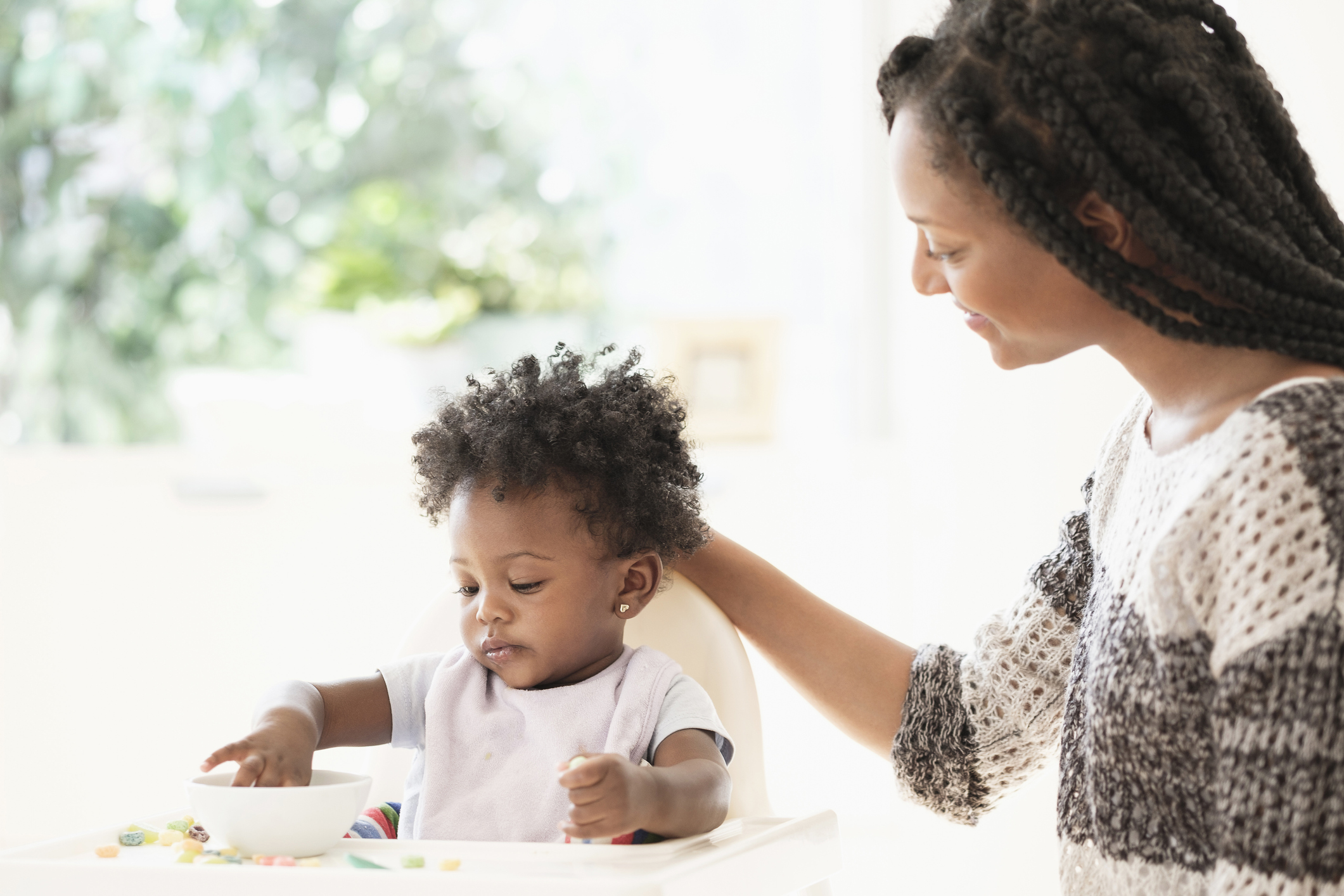
Top weaning tips from real parents:
'My best tip is to freeze everything! I have a drawer in our freezer especially for Finlay's food so it's easy to see what I have, ready for his lunches and tea.' Glenda, 32, mum of Finlay aged 8 and a half months old
'Sam loved bananas but after I fed him them for the first time, his stools were filled with what looked like little black worms. Don't worry if this happens to you - they're just banana fibres. Phew! Jenny Bounsall, mum of Sam aged 10 months old
'When I started weaning my baby, I found that steamed fruit and veg, rather than boiled, made the tastiest meals. I loved the baby food mill for turning Sam's meals into textured purees which weren't too smooth or too lumpy.' Jenny Bounsall, mum of Sam aged 10 months old
'I found Baby-led Weaning much easier than pureeing. I went straight into sharing our meals with both of my babies.' Sarah Graham posted this top tip on Facebook
'Sam would get restless and upset at meal times. When I gave him a spoon to play with or finger foods while I fed him, he was happy as Larry.' Jenny Bounsall, mum of Sam aged 10 months old
'I was really worried about feeding my baby healthily on a budget when we started weaning. Until I realised I qualified for Healthy Start vouchers for fruit, veg and milk too.' Angie, mum of Harry aged 11 months old
We spoke to the following parenting experts:

Charlotte is a Registered Public Health Nutritionist who runs her own Nutrition Consultancy Company - SR Nutrition and specialises in maternal, infant and child nutrition as well as nutrition in the media. She's also the author of How to Wean Your Baby and the nutritionist who help compile Joe Wicks' Wean in 15 book.

Heidi is a Baby Sleep Coach, with over 9 years experience in working one to one with families and a total of 18 years childcare experience. She truly understands what it means to become a parent and is passionate about families being able to enjoy those precious first few years. Heidi works with families either one to one through 1-1 parenting packages or via online parenting courses which cover topics such as baby sleep, behaviour, weaning and potty training.
Video of the Week
Parenting advice, hot topics, best buys and family finance tips delivered straight to your inbox.
